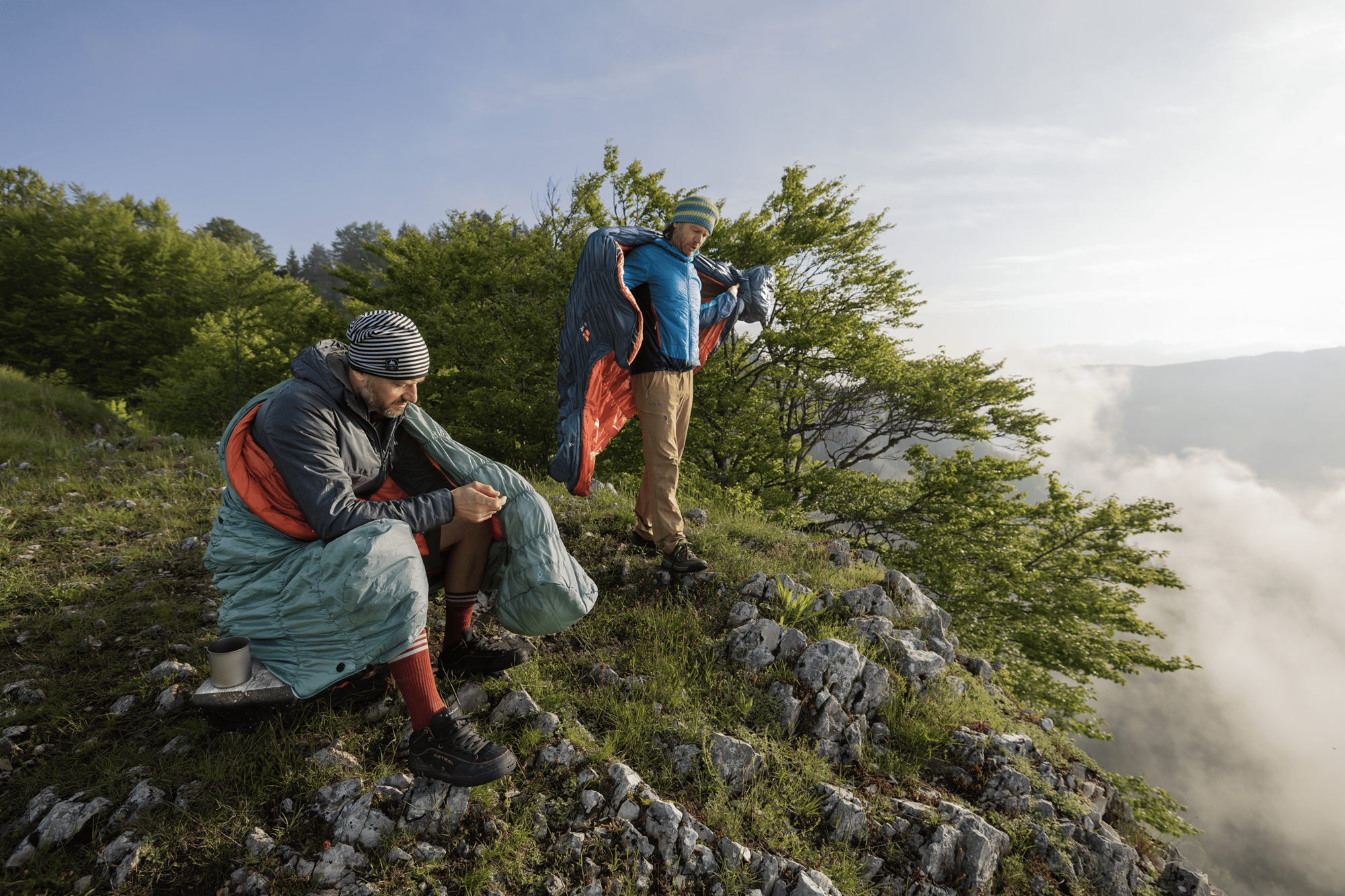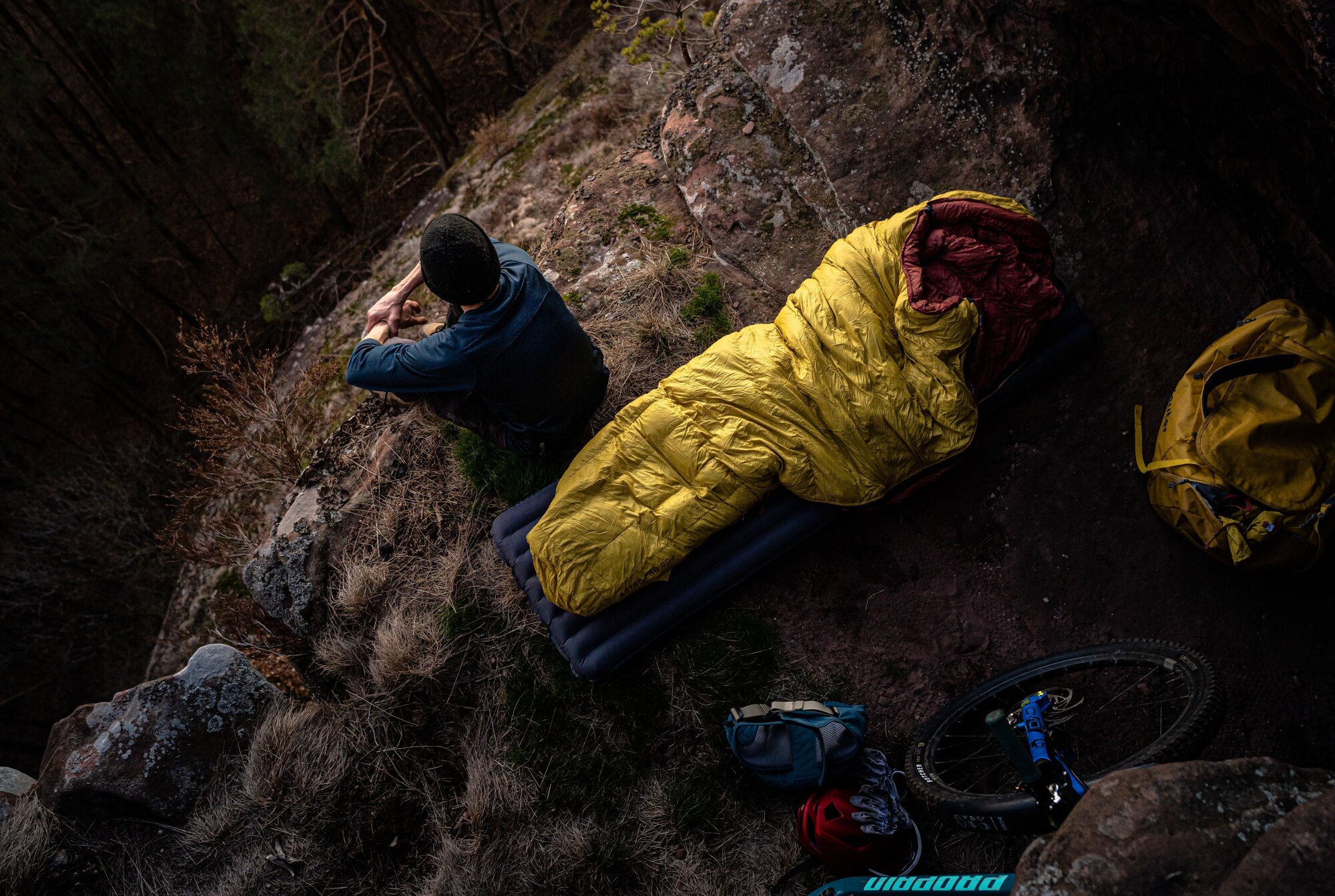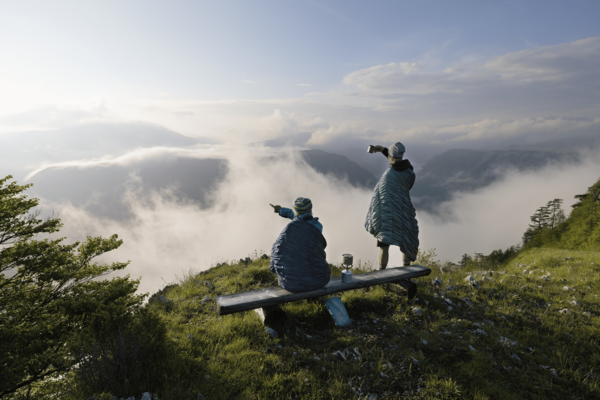5 TIPS FOR SLEEPING UNDER THE OPEN SKY

5 TIPS FOR SLEEPING UNDER THE OPEN SKY
Scientific studies show that getting fresh air and spending time in nature is very healthy, as it has a positive effect on our immune system. You get plenty of fresh air, especially when you sleep outside. But that's not all. Sleeping in the open air can also make you very happy: The good air, sounds, smells and the view of the sky ground you at night and put the worries of the day into perspective. Living in the great outdoors, the "Friluftsliv", is a centuries-old Scandinavian outdoor tradition that is being actively practiced again today. So why not try it out for yourself? Because sleeping outside, watching the twinkling stars in the sky, is exciting and adventurous.
We've picked out five tips for you to help you plan your bivouac. And above all, help you sleep better outdoors:
1. A suitable place to sleep
A suitable place to sleep outdoors is not always easy to find, as wild camping is not permitted everywhere. The legal situation can vary from place to place. You can find out what rules apply to wild camping from your local council or the local police. After all, you don't want to be rudely awakened by a flashing blue light siren and possibly have to pay a fine. But it is also important for the animals and nature that you abide by the applicable laws.
Once you have found a nice place to sleep, you should make sure that it is as level and dry as possible. If the sleeping area is not level, position yourself so that your feet are down and your head is up. Avoid sleeping near bodies of water and don't lie down in tall grass to protect yourself and your equipment from getting wet. It is often more sheltered and drier in the forest or at the edge of the forest than in the meadow. Once you have found a suitable place to sleep, don't forget to take your garbage with you the next day and leave the place clean.
2. Hammock or sleeping mat + sleeping bag
Whether it's a hammock or a sleeping mat - you should definitely think about insect protection or a mosquito net first, as it can be particularly uncomfortable without protection, especially in summer. It's also worth having a tarpaulin/tarp in your luggage in case the weather suddenly turns nasty.
The advantage of sleeping in a hammock is that you can escape the rising ground cold. However, you should only use special straps that will not damage the trees. If you prefer a sleeping mat, you should make sure that there are no sharp objects under the mat to avoid holes and uncomfortable lying. Regardless of whether you choose a hammock or sleeping mat, the right sleeping bag is also important. Your sleeping bag should always be warm enough. For the best sleeping comfort, deuter has suitable sleeping bags for different temperature ranges, body sizes and areas of use. A popular classic is the Exosphere, for example.
The bluesign® certified inner and outer material is made from 100% recycled polyester, as are almost all components of the sleeping bag. The elastic ThermoStretch construction seams, the 360° distribution of the High-Loft Hollowfibre filling and the shingle construction with 1.3-fold overlap ensure a pleasantly warm climate in the sleeping bag. Sophisticated details such as anti-trap protection on the zipper, ergonomic foot construction and the robust, high-performance outer material make the sleeping bag a lightweight, functional companion in the mountains.

3. A pillow
Your sleep will probably be more comfortable if you position your head slightly elevated. There are numerous light and comfortable pillows, in a wide variety of designs, from a wide range of suppliers. But there is also a very good and inexpensive option: simply fill the sleeping bag cover with the clothes you have with you for the bivouac.
4. The right clothes for the night
There is hardly anything more annoying than not being able to sleep because of the cold. That's why it makes sense (depending on the location and temperature) to wear long thermal underwear in case it does get colder than expected. Even if your bladder starts to pinch during the night, you don't have to put anything on, but can comfortably meet the need. A thin hat can also protect you from the cold during the night and ensure a good night's sleep when bivouacking. If it gets too warm, simply take a few things off, which is still quicker than putting on warm clothes and warming up in the middle of the night. If you are particularly sensitive to noise, you should take earplugs with you.

1. I’m packing my backpack and I’m taking with me…
The motto: as little as possible, as much as necessary. Regardless of whether you are planning a hut tour or want to be completely self-sufficient: Certain things always belong on the packing list for multi-day tours.
The universal packing list for your bivouac adventure (multi-day tour)
Clothing
- One pair of hiking boots
- Hiking pants with zip-off function
- Functional shirt & shirt
- Fleece pullover or jacket
- Jogging pants
- Rain jacket & rain pants or rain cape
- Jacket (depending on climate)
- Hiking socks & change of underwear
- Scarf, hat, gloves (depending on climate)
- Swimwear (depending on climate)
Equipment
- Drinking bottle or hydration bladder
- Sunglasses (glacier goggles if necessary) Goggles (glacier goggles if necessary)
- Headlamp or flashlight
- Bin bag
- Pocket knife
- Armored tape
- Toiletry bag (travel sizes, biodegradable soap)
- Microfiber towel
- Handkerchiefs or toilet paper
- First-aid kit: (blister) plasters, sun cream, first aid kit, painkillers, ointment, insect repellent, tick tweezers
- ID, health insurance card, DAV membership card, vaccination card, EC card, cash
- Mobile phone, (camera), or compass, hiking map
- Food (depending on the tour, snacks for on the go or dinner/breakfast)
- Magnesium tablets and electrolyte solutions
Packing list for hiking multi-day tours with tent
- Sleeping bag (consider night-time temperature)
- Tent or bivouac
- Sleeping mat vs. hammock
- Gas stove & pot
- Cutlery, plate, cup
- Lighters (more than one)
- Power bank for cell phone
- Eco-friendly washing-up liquid

You can find more packing lists here.
We explain how to pack your rucksack correctly in a separate guide.
We hope the tips on sleeping outside have helped you and, above all, lured you out into nature 😊.